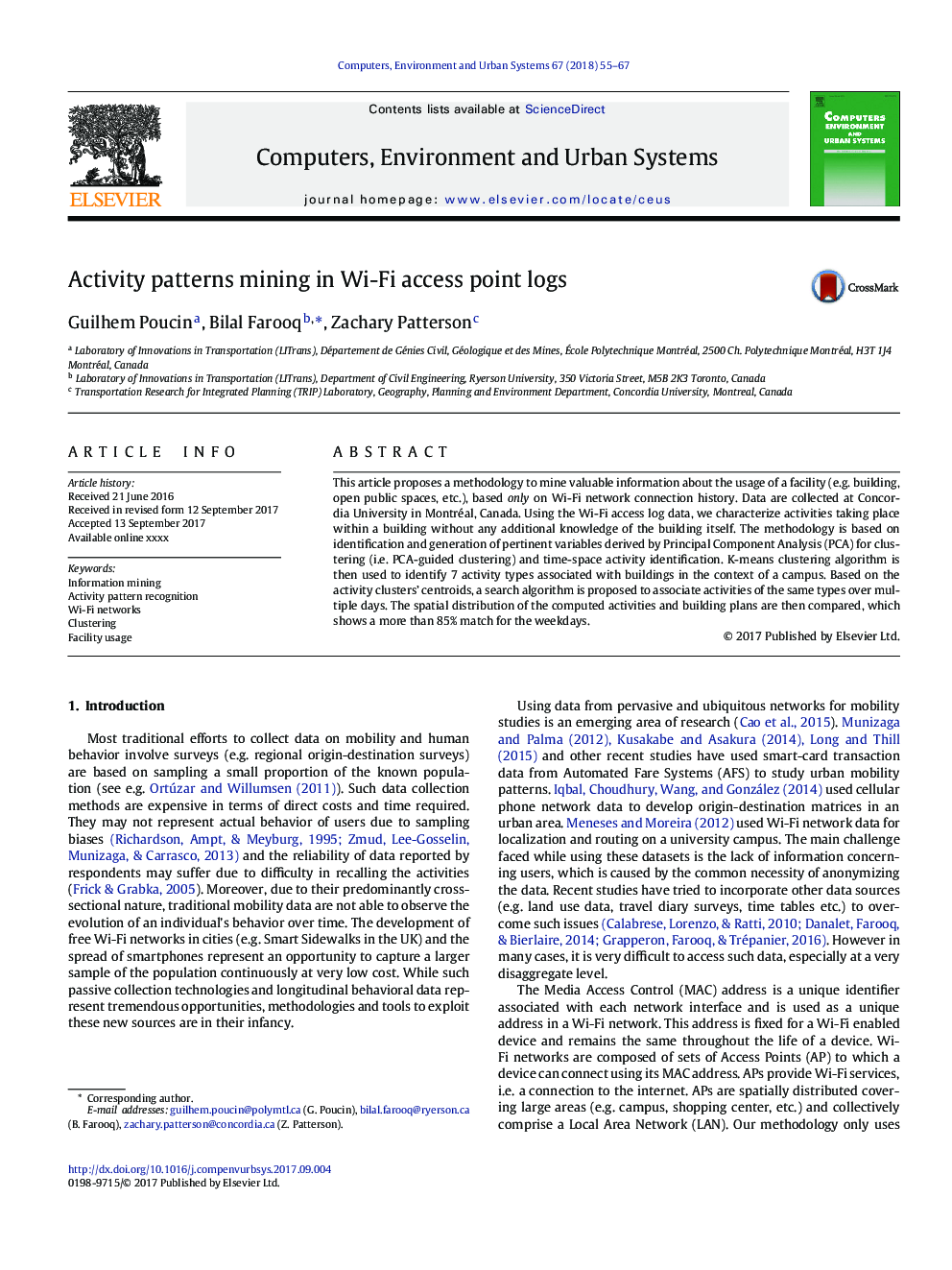| Article ID | Journal | Published Year | Pages | File Type |
|---|---|---|---|---|
| 4965106 | Computers, Environment and Urban Systems | 2018 | 13 Pages |
â¢Methodology uses only the longitudinal information generated due to the communication protocol of Wi-Fi networksâ¢Identifies the spatio-temporal distribution of the main activities in the context of a large areaâ¢Exploits Principal Component Analysis guided K-mean clustering to analyze activities pattern during the dayâ¢Develops semantic meanings of the clusters and then propose a search algorithm to match the clusters over the weekâ¢Presents the comparison of our results with designated usage.
This article proposes a methodology to mine valuable information about the usage of a facility (e.g. building, open public spaces, etc.), based only on Wi-Fi network connection history. Data are collected at Concordia University in Montréal, Canada. Using the Wi-Fi access log data, we characterize activities taking place within a building without any additional knowledge of the building itself. The methodology is based on identification and generation of pertinent variables derived by Principal Component Analysis (PCA) for clustering (i.e. PCA-guided clustering) and time-space activity identification. K-means clustering algorithm is then used to identify 7 activity types associated with buildings in the context of a campus. Based on the activity clusters' centroids, a search algorithm is proposed to associate activities of the same types over multiple days. The spatial distribution of the computed activities and building plans are then compared, which shows a more than 85% match for the weekdays.
